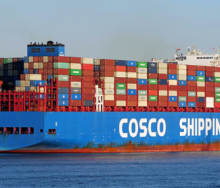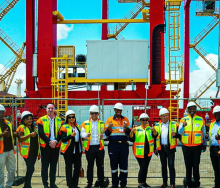The conclusion of the first round of public responses to the Environmental Impact Assessment (EIA) for the upgrading of the Cape Winelands Airport on the outskirts of Durbanville to international status has been concluded and Cape Town should see a second modern passenger and cargo airport opened in 2027.
A second round of public consultation will be undertaken next year, with construction and extensions to existing facilities anticipated to be in 2025.
The upgrading of the existing airport will cost R7bn, according to Nick Ferguson, managing director of the holding company and private developer RSA.Aero, who said the project had been years in the making.
“We bought the existing airport in 2020 and have been working on the project since then to understand the product that is needed for Cape Town in terms of aviation transport.”
He revealed that the airfield, originally built in 1943, would be the mothership in a network of airports to come in other cities of the country.
He added that cities followed airports and airports then became the city.
“That is what airports do, as illustrated in the Unites States of America that has some 2 000 airports.”
The R7bn investment in the existing facility will transform it to a Code F airport that specifies the requirements for the landing and take-off of the largest passenger airliners, such as the Airbus A380.
Air traffic figures are projected at 1.7 million passengers per annum on the day it opens, growing to two million by 2030, 3.8 million by 2040, and 5.2 million in 2050, to take 25% of the total market of Cape Town International Airport (CTIA).
The expansion programme includes a realigned 3.5km runway with all associated airside infrastructure, a new boutique terminal building, cargo facilities and fuel-storage amenities. Future commercial developments planned include offices and hotels.
According to Ferguson, the Johannesburg-Cape Town route is the 10th busiest air route in the world.
Managing director of the airport, Deon Cloete, said the reasons for the original construction of the airport by the Allied forces 80 years ago were still fully relevant today.
“It is situated at the urban edge, at sea level with a 400-ft elevation that puts it out of the winter fog band.” He added that the 5km stretch of Joostenbergvlakte was sufficient to put down the 3.5km runway.
He said the emerging metropolis of Cape Town had shown much growth in the northern suburbs, making it “the growth point”.
Airport general manager, Mark Wilkinson, said many factors necessitated the need of a second airport in Cape Town. More accessible air transport was needed to improve air access in a region where slot constraints during peak hours at CTIA often escalated the price of air tickets.
“With a fast-growing city that is isolated from the north, a second airport is absolutely needed. Passengers drive airlines and there is a need in this area, from here and up into the West Coast.”
In addition, the placement of the airport will substantially reduce fuel consumption and the amount of back-up fuel that needs to be carried, which translates to a 5% reduction of carbon emissions per flight. Moreover, he said the new airport would be a temporary relief in case of closures at CTIA.













